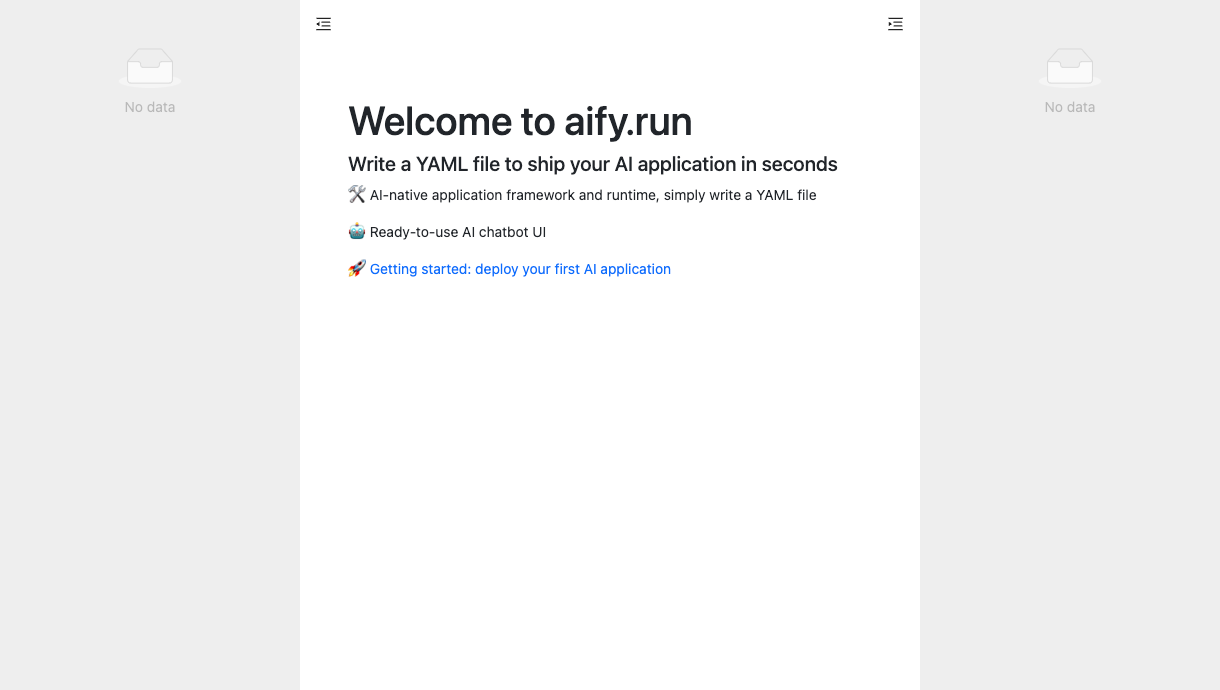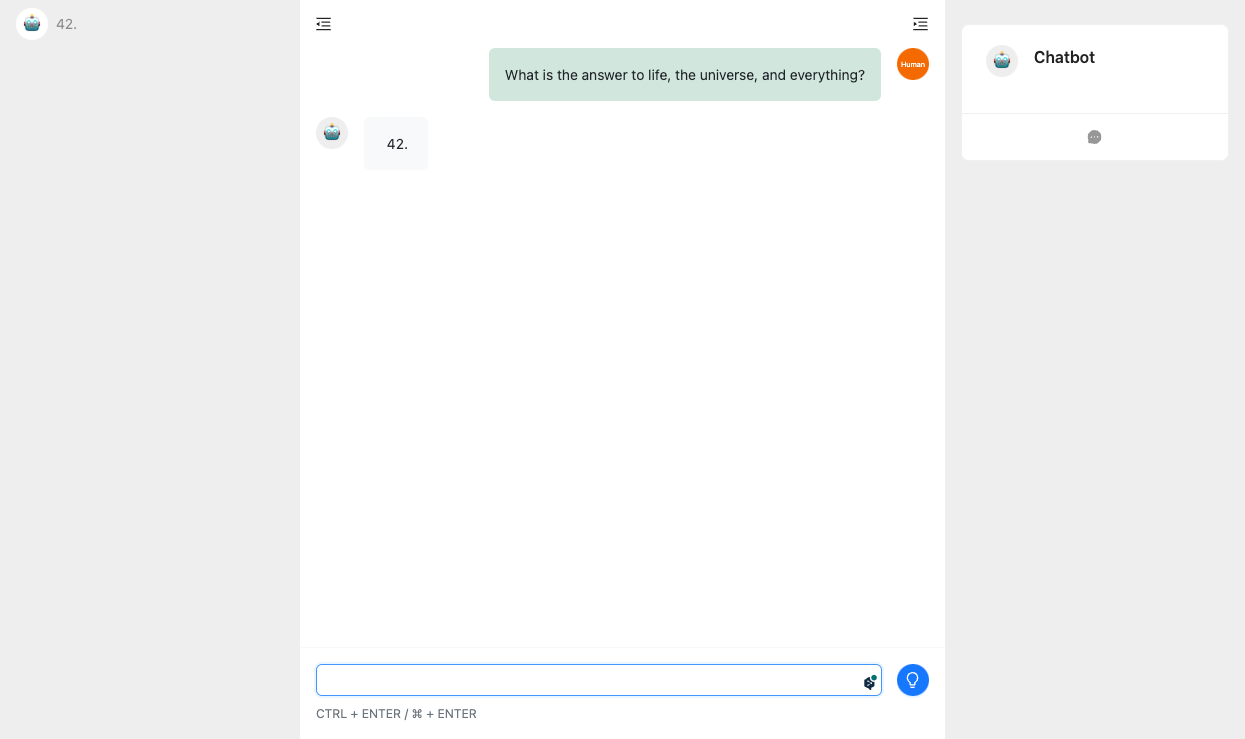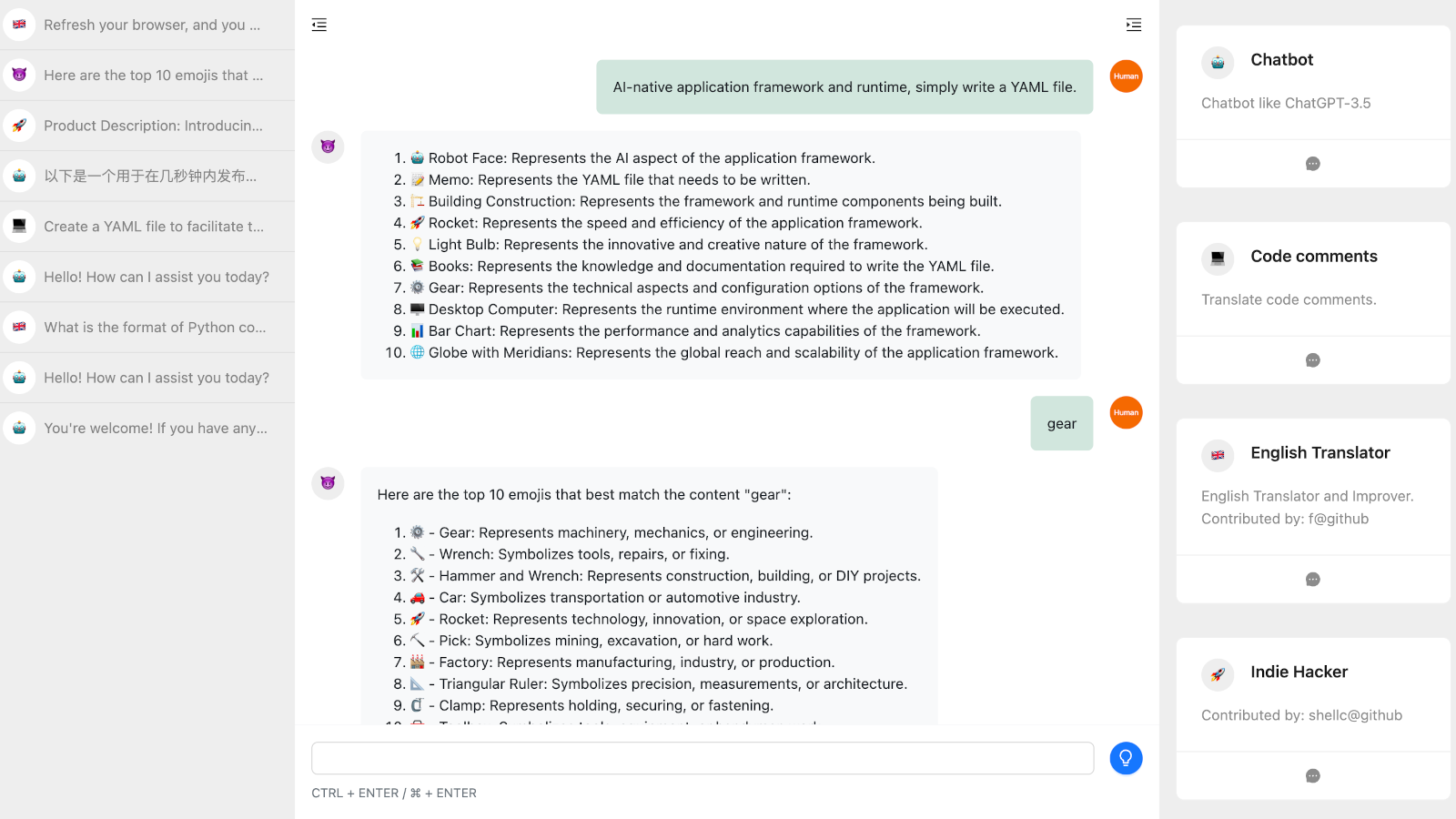Home | Documentation | Feedback
🛠️ AI-native application framework and runtime. Simply write a YAML file.
🤖 Ready-to-use AI chatbot UI.
Dependencies
- microsoft/guidance as the core prompt engine
- Uvicorn, Starlette, FastAPI as the server
Features
- Models: The LLMs/transformers models supported by guidance.
- Memory storage: Local file / Google Cloud Datastore / User-defined
- Embeddings: OpenAI / User-defined
- Vector storage and search: Local CSV files, Pandas DataFrame and Numpy in memory / User-defined
- Deployment: Local / Google Cloud App engine
- UI: Chatbot webui
- API: RESTful API / Python
Welcome to Aify, the AI-native application framework and runtime that allows you to ship your AI applications in seconds! With Aify, you can easily build and deploy AI-powered applications using a simple YAML file. In this guide, we will walk you through the steps to get started with Aify and create your first AI application.
To begin, make sure you have the following prerequisites installed on your system:
- Python 3.8 or higher
- Pip package manager
Once you have the prerequisites, you can install Aify by running the following command in your terminal:
pip install aifyYou need to prepare a directory for your applications:
mkdir ./appsNow you can start the aify service and then access http://localhost:2000 using a browser, and aify will greet you.
aify run ./appsNow it's just a blank application, you can't use it for anything. Next, we will create a chatbot.
Creating a YAML file aify uses a YAML file to define your AI application. This file contains all the necessary configurations and settings for your application. Here's an example of a basic YAML file:
title: Chatbot
model:
vendor: openai
name: gpt-3.5-turbo
params:
api_key: <YOUR_OPENAI_API_KEY>
prompt: |
{{#system~}}
You are a helpful and terse assistant.
{{~/system}}
{{#each (memory.read program_name session_id n=3)}}
{{~#if this.role == 'user'}}
{{#user~}}
{{this.content}}
{{~/user}}
{{/if~}}
{{~#if this.role == 'assistant'}}
{{#assistant~}}
{{this.content}}
{{~/assistant}}
{{/if~}}
{{~/each}}
{{#user~}}
{{prompt}}
{{memory.save program_name session_id 'user' prompt}}
{{~/user}}
{{#assistant~}}
{{gen 'answer' temperature=0 max_tokens=2000}}
{{memory.save program_name session_id 'assistant' answer}}
{{~/assistant}}
variables:
- name: prompt
type: input
- name: answer
type: outputHere are some simple explanations about this YAML file:
- The title represents the name of this application.
- The model section defines the AI model used by this application and the runtime parameters required by the model.
- The prompt section is used to drive the application's execution. Aify uses the guidance software package provided by Microsoft to drive the execution of the AI program. Guidance provides a way to operate as a Chain of Thought. Since guidance uses the Handlebars template system, the format of this section is actually a Handlebars template.The prompt section contains some helper functions that allow the AI model to dynamically change its runtime behavior, helping us achieve more complex functionality. These functions are built-in to aify, but you can also write your own helper functions in Python to accomplish specific tasks.
- The terms "system," "user," and "assistant" are used to define the roles in an LLM-based chat task.
- "memory.read" and "memory.write" are built-in helper functions in Aify, used to save and load the conversation history of users and AI.
- "each" and "if" are branch control statements provided by Handlebars.
- "gen" is the function provided by "guidance" to indicate the execution of LLM generation tasks.
- The variables section defines the input and output variables of the application, which are used for external systems to access the data generated by AI through an API.
Now go back to your browser and refresh the page. You will see the application you just created. You can have some conversations with it, just like ChatGPT.
Although aify provides a chatbot interface, its main purpose is not to provide a replacement for ChatGPT or a competitive conversation application.
The chatbot UI is only for convenient debugging of AI applications. Of course, you can indeed use it as a chatbot for daily use.
The main goal of aify is to provide an efficient framework for developing and deploying AI applications.
If your goal is to develop your own complex AI applications, you should pay more attention to the APIs and extension mechanisms provided by aify.
📝 More examples: https://github.com/shellc/aify/tree/main/examples


